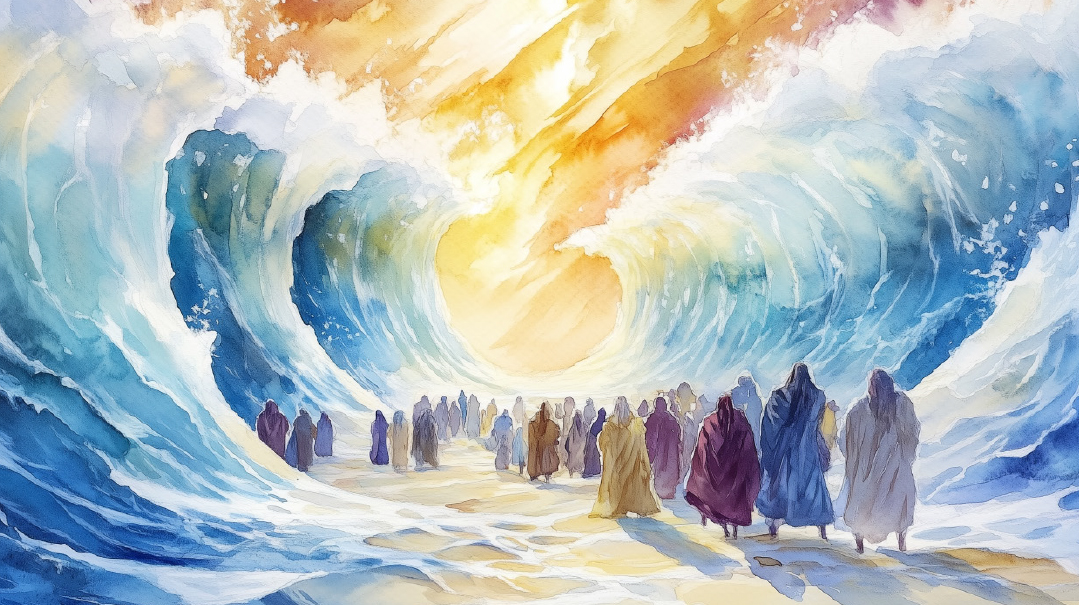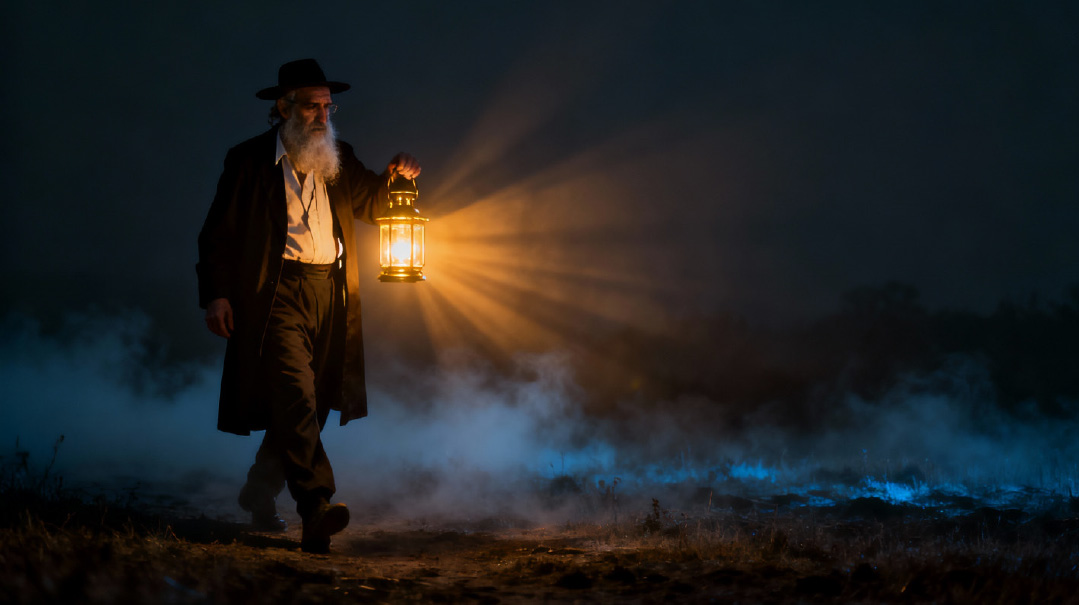You’re Not So Ordinary
| April 1, 2025A powerfully fresh perspective on the Haggadah — and how it can elevate your life

Some of us are actively bothered by the following question. Some of us have never thought about it before, but upon reading it now, would love to hear a practical answer. Even if you don’t belong to either group, listen in on the following conversation to discover a powerfully fresh perspective on the Haggadah — and how it can elevate your life.
Our Seder is always beautiful. Aside from the uplifting singing and delicious food, we share many deep, inspiring divrei Torah.
But something’s been bothering me. I’ve heard many times that the Seder has tremendous power to strengthen our emunah and avodas Hashem. And I don’t really experience that. I don’t come away with concrete growth that lasts after we put away the Pesach dishes.
How can I help my family and myself extract the growth we’re supposed to be gaining from the Seder?
Great question. Where does this concrete growth begin? With understanding the full story the Haggadah is trying to tell us — perhaps in a different light than we have ever understood it before.
We’ll start with the Arizal, who makes an important distinction. The purpose of the Exodus wasn’t just to free us. It was the birthing process of the entity called Klal Yisrael. Like Chazal teach, Hashem pulled the Jewish People out of Mitzrayim like a farmer pulls a baby calf from inside its mother.
What’s so special about the fact that Hashem created our nation? Didn’t He create all the nations of the world?
Yes — but He created them naturally. Only the Jewish People were created supernaturally.
At Creation, Hashem set in place a natural process for the development of nations. Individuals would build families, who would become tribes, who would multiply and form nations.
Had Hashem allowed creation to run its normal course, it would never have produced a Jewish nation.
“Mit’chilah ovdei avodah zarah hayu avoseinu, v’achshav keirvanu haMakom la’avodaso — Originally, our forefathers were idol worshippers, and now Hashem has brought us close to His service.”
As the Haggadah prepares to summarize the Jewish People’s history, it makes a rather unflattering admission: Just like the rest of the world, our ancestors were ordinary idol-worshippers. There was nothing G-dly or special about them.
But what about Avraham Avinu? Didn’t he discover Hashem? Didn’t he fight the whole world to promote Hashem’s honor?
Yes, he did. But it didn’t originally come from him.
Immediately after “Mit’chilah,” the Haggadah quotes a pasuk from Yehoshua (24:3): “Your ancestors dwelled across the river and served other gods. And I [Hashem] took Avraham and led him throughout the Land of Canaan.”
Metzudas Dovid elaborates on these words with the explanation that Hashem, out of His kindness, “turned Avraham’s heart away from the path of his father and brothers and took him from among them so he should not stray after their false beliefs.”
So Avraham’s emunah epiphany wasn’t self-motivated?
No. At the beginning of his life, there really was no difference between him and anyone else. Except the chok, the unexplainable Divine decision, that Hashem chose him. Hashem entered Avraham’s mind and triggered this revolution of thought.
Moving down the storyline, we witness Hashem continually placing impossible obstacles in the path of our nation’s development — and leading us past them through overt miracles. Why did Hashem choose women physically incapable of having children to be the mothers of His nation? Why was that an important piece?
“Arami oved avi” — why did Yaakov, born through a miracle, need more miracles to survive Lavan’s murderous attempts against his family? And why did the Haggadah see fit to include that story?
Even Vehi She’amdah — have you ever thought about why the Haggadah mentions this? Beyond that, why has it been necessary for our nation to live through this pattern in the first place — constantly threatened with destruction, saved through miracles, and preserved in statistically impossible numbers?
Because every step in Klal Yisrael’s development had to involve a break from nature. We needed to know our existence was and continues to be based entirely on Hashem’s miracles.
But why? Why did we need such a supernatural creation process? And why do we need to talk about it each year at the Seder?
There’s a pasuk at the end of parshas Tetzaveh (29:46), where Hashem states the reason He redeemed us from Mitzrayim: “For I am Hashem, their G-d, Who took them out of Egypt l’shachni b’socham — to dwell in their midst.”
The entire point of Yetzias Mitzrayim, the entire point of the creation of Klal Yisrael, the entire point of the mitzvah d’Oraisa to sit at the Seder and recount the story of the Exodus — lies in those two words.
L’shachni b’socham. To ensure there exists a place on this earth Hashem can call home. To manifest and increase His presence in this world.
As Chazal teach, Hashem created this world so His Presence could dwell even in the lowest of places — in our Sages’ words, a “dirah b’tachtonim.” But soon after creation, the world veered off course, getting swept up in idolatry and forgetting its purpose.
It was time, Hashem determined, to create a nation equipped to lead the world to its intended purpose. And this nation couldn’t develop naturally, like the existing ones. This nation would need to be completely His, stemming completely from Above.
Why? Because our people are Hashem’s embassy on this earth. Just as an embassy operates within the territory of a host country, but is legally the territory of its home country, Klal Yisrael exists within the world — but we’re the real estate of a world Above. If we weren’t totally identified with Hashem, we’d get swallowed up by earthliness like all our fellow nations have. We needed to be thoroughly different, thoroughly Above, if we were going to stay the course as His dwelling place on earth.
What is a dwelling place? It’s a means, a vessel, that does the job of manifesting G-d’s presence. Which is a key definition. It’s not like Hashem simply handed our nation a sacred mission. He created us yeish mei’ayin for this exclusive purpose.
Think about a hammer for a minute. The craftsman who invented the hammer didn’t pick it up afterwards and decide it would be helpful for pounding nails into things. No. He went into the process thinking, “I want to create a tool that will help me pound in nails. What should it include?”
What makes us like that hammer? Our Craftsman’s intention. We too were created from the get-go as the tool to increase Hashem’s Presence on earth. To fill voids of kedushah in the world around us. Our entire existence revolves around this goal. It’s our single, exclusive priority in life.
That’s what the Haggadah seeks to tell us: Don’t make the mistake of thinking like an ordinary person. Don’t live your life to get comfortable in this world, looking at your mission as extra credit, or as an additional nice thing you’re doing.
This world isn’t your home. You’re here, and for a purpose, but you don’t belong. You belong to something much higher, much more eternal. Remember to live that way.
But what if I feel like an ordinary person? Dedicating one’s life to filling voids of kedushah in this world sounds like something only the greatest of Jewish heroes can do. The Rav Yisrael Salanters, Chofetz Chaims, Rav Aharon Kotlers, and Sarah Schenirers. It’s way above and beyond normal people like me.
No, it isn’t. Each of us was commanded to remember Yetzias Mitzrayim “kol yemei chayecha.” Each of us was given the yearly task of reaffirming our identity as agents of holiness in this world — and recommitting to centering our lives around it.
What’s the common thread between the life missions of the spiritual giants you mentioned? None of them was willing to settle for a subpar status quo. They all felt a powerful drive to make a change — and acted on that drive.
Like the first Ivri, Avraham Avinu. Once he had discovered the truth of G-d, he could have simply committed himself to G-d’s service and ignored the rest of the world. But he didn’t. He made it his life’s work to introduce everyone he could to G-d’s sovereignty.
Of course, Hashem doesn’t expect us to be Avraham Avinu. But we’re still responsible to fight subpar spiritual status quo. We’re responsible for those areas of our Judaism where there’s inertia. Where things are going nowhere fast and we aren’t doing anything about it.
Living like a “l’shachni b’socham” Jew means shaking up that status quo and consciously redirecting ourselves toward Hashem.
Say we’re going through a rough patch with our davening. Day after day, we’re praying by rote. Living as a “yotzei Mitzrayim” means pausing the flow. Taking stock. Committing to work on it.
Say we’ve got two friends in a fight. They aren’t speaking, and each day that passes locks them further into the conflict. Technically, it’s their problem, not ours. But living to fulfill our nation’s purpose means seeing a problem and taking action — pausing and asking ourselves what we can do to ease the tension between our friends.
What if I’m not ready to challenge the spiritual status quo in every area of my life?
It’s not about achieving perfection. It’s about changing the way we see ourselves and the purpose of our lives. Once we do that, once we get our identity straight, we’ll easily be able to make a few small changes. And if we maintain our awareness, more changes will follow.
When we think of ourselves as regular people just living our lives and doing what we need to do — we miss the boat on the entire purpose of our existence.
When we truly internalize the Haggadah’s message, that we’re here solely and simply to sanctify G-d’s Name, every moment of life — kol yemei chayecha — becomes an opportunity for meaning. An opportunity to fulfill our mission.
Rabbi Levi Lebovits is the director of the Vaad Project, an initiative to help Jews worldwide find joy, meaning, and fulfillment in their Judaism. He has studied for over 20 years under Rav Reuven Leuchter, and has authored step-by-step guides on teshuvah and the Haggadah.
(Originally featured in Mishpacha, Issue 1056)
Oops! We could not locate your form.






